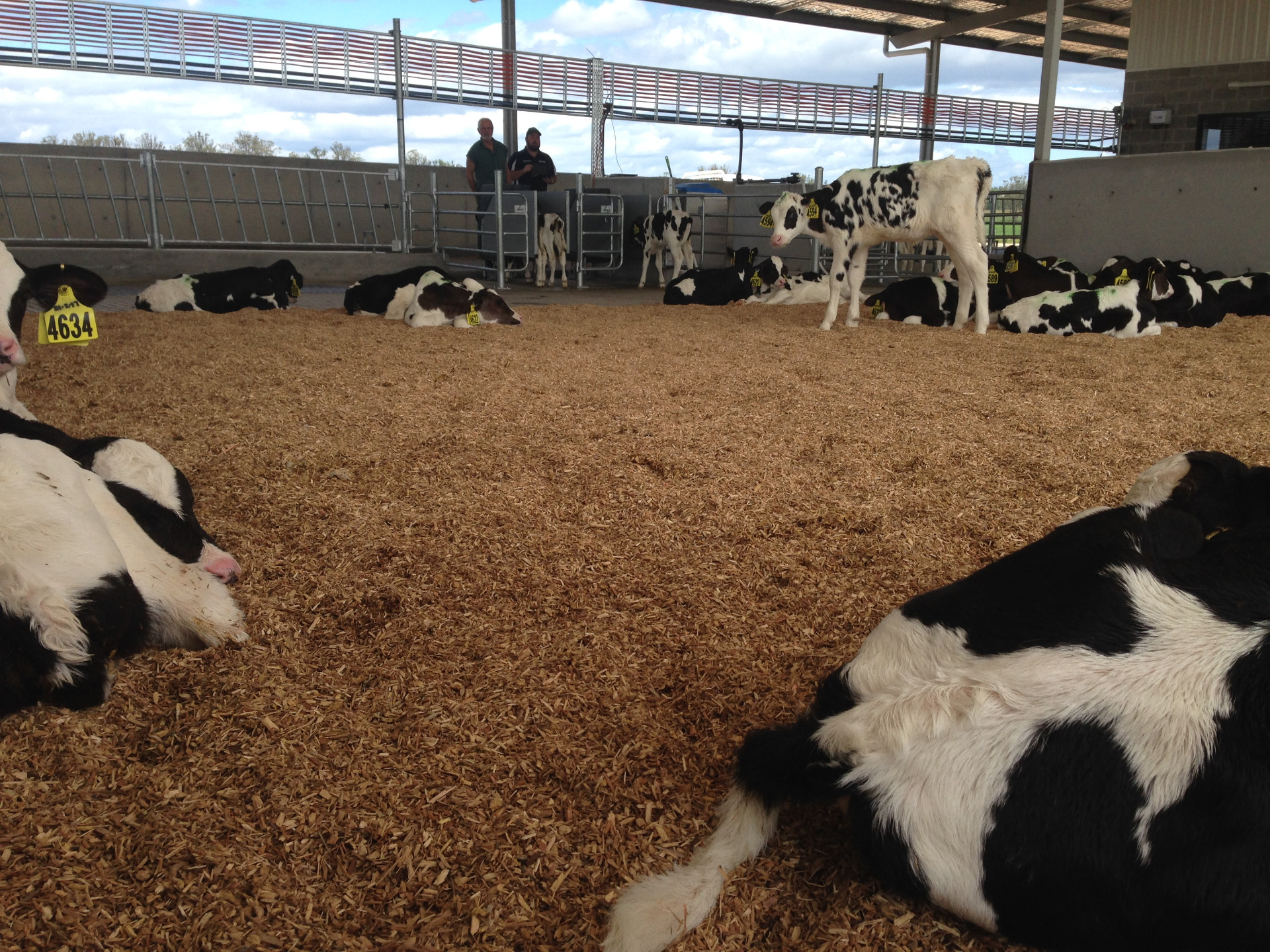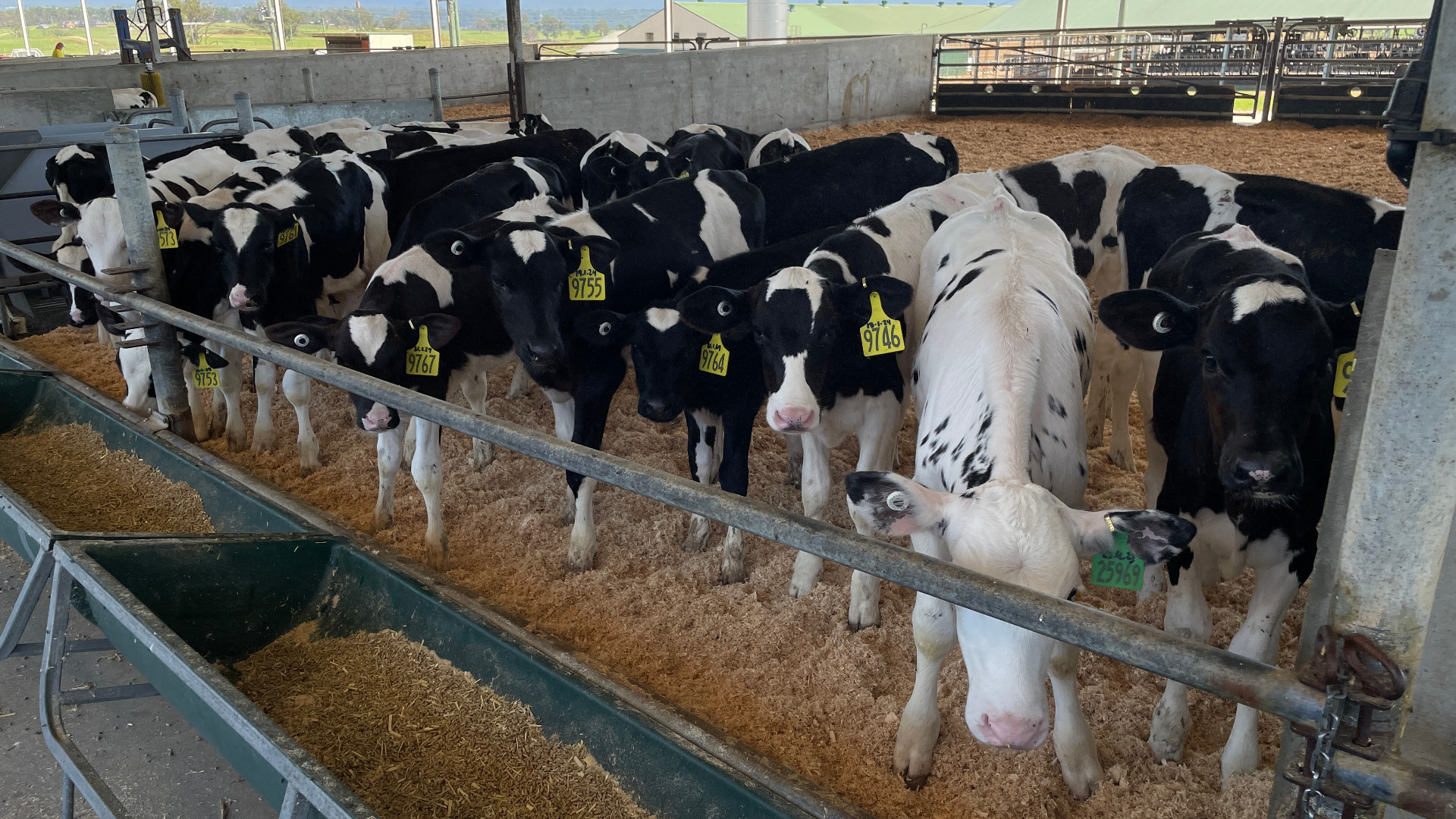"We take great care and effort with the rearing of our young stock"
24. Mai 2024 — Calf Feeding, Ventilation, Practice report, Calf feeders — #CalfExpert #Management #NativeCalfConcept #Pen SystemThe Leppington Pastoral Company is a family-run dairy farm milking 2,000 cows. The farm is located just outside Sydney and is one of the largest in Australia.
After working at Leppington Pastoral Farm for six years, Emma Harris and her team assumed responsibility for rearing the calves. Together they ensure that their young animals are raised professionally.
Article content:
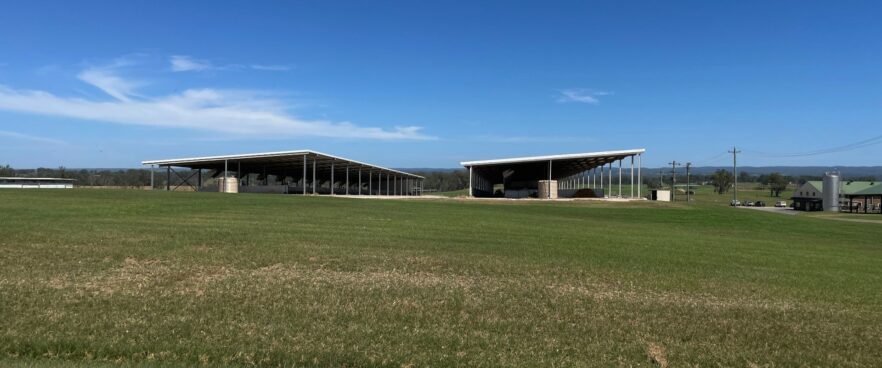
12 H&L 100 automatic calf feeders
The calf unit consists of two large, open buildings with 12 H&L 100 automatic calf feeders. Each feeder supplies two groups of approx. 25 calves. As the boxes are 100 m² in size, each calf has 4 m² of space. So this means plenty of space to relax, play and feed.
Both buildings are equipped with large fans to cool the calves in summer.
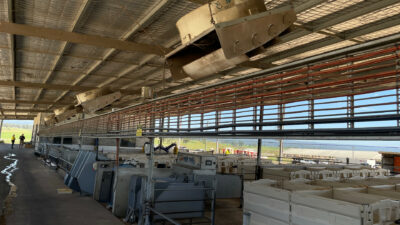
Bull calves, which are later sold to fattening farms, are also kept alongside the female calves. It is therefore important that all animals are well given the best possible care. This includes excellent nutrition, a well equipped barn and a high level of comfort for all calves. The calves use rotating brushes to clean their coats and they also play with them a lot.
It all starts with good colostrum
Calves are given 4 litres of pasteurised colostrum within the first hour of birth using the coloQuick system. The goal is a colostrum quality of 25 - 28 % Brix. This helps the calves to develop good immunity and protects them from various diseases they may come into contact with. Blood samples are taken when the calves are two days old to check their immune status.
They are later vaccinated again with a broad-spectrum vaccine at 4 and at 8 weeks of age.
From the versatile PenSystem to the automatic calf feeder in 4 to 8 days
The calves are moved to the calf barn after the first colostrum. and remain there in small PenSystem boxes for between 4 and 8, or a maximum of 10 days. They are given 2 x 2 litres of milk replacer from a bottle.
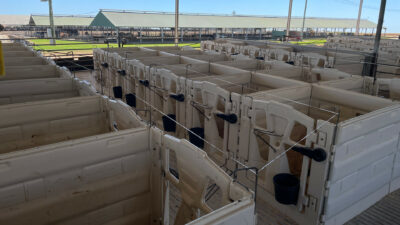
The pen stalls are arranged in the large group boxes. The calves are gradually let out as soon as they have been feeding stably from the teat bottle for a few days. The PenSystem elements are then simply removed from the group box. "This allows the calves to stay in the same environment from day one and we avoid any unnecessary stress for our little ones," says Emma.
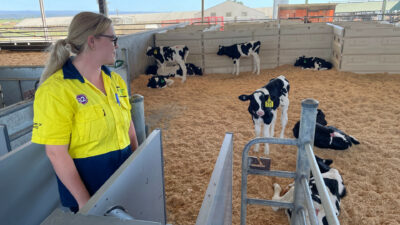
The earlier the calves are familiarised with the automatic calf feeder, the better. "We seem to see fewer cases of colic when we put the calves on the feeder earlier," she says. The training phase at the automatic calf feeder lasts no more than two days until the calves can reliably drink the quantities allocated to them.
A group of 25 calves is quickly formed due to the large number of cows. The age difference between the calves is only a few days.
Up to 12 litres a day for good growth
The calves are then fed up to 12 litres per day at the H&L 100 automatic calf feeder. This is unusual for Australia, where many farms still feed two litres of milk twice a day. The calves are also fed starter pellets and crushed oats, which are both offered to the calves from day one to help them develop their rumen.
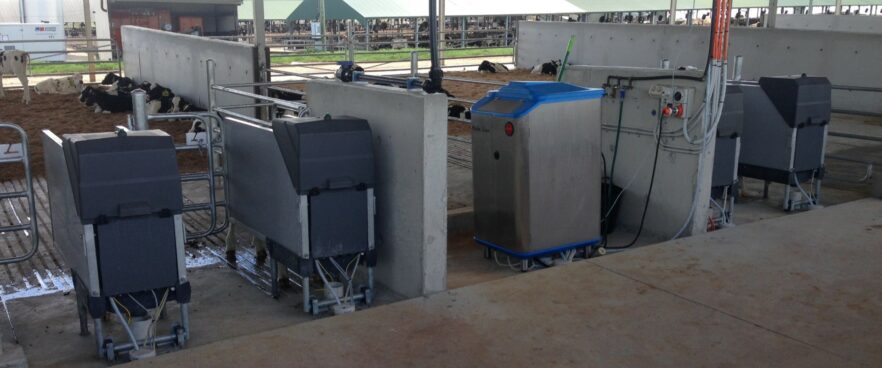
The automatic calf feeder starts to wean the calves after 35 days, reducing the amount of feed by 0.6 litres a day. This results in fully weaned calves at the age of 8 weeks. "We notice that the calves start to eat more pellets as soon as the milk is reduced," Emma explains.
The calves remain in the calf barn for a further two weeks. Then, at the age of 10 weeks, they are put out to pasture in the beautiful surrounding hilly landscape in weaning groups.
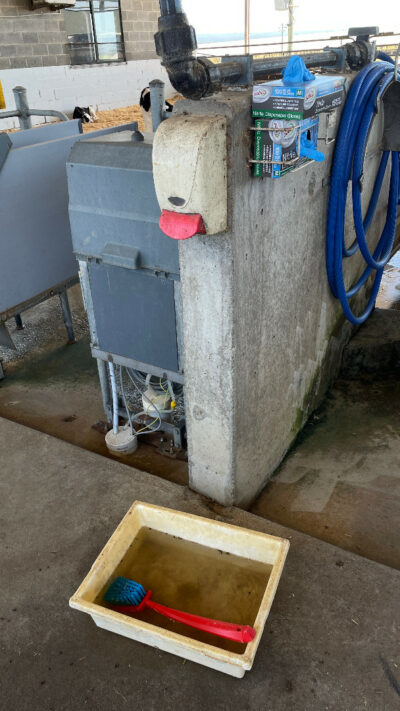
Daily and weekly work processes
Emma manages a team of 3 full-time and 2 part-time employees. The team's daily routine starts with the preparation of milk for the youngest calves in the individual pens. They also collect the calves that were born overnight, transfer them to the pen system and feed them. These calves are also ear-tagged and tested for A2 genomics, as the herd of 2,000 cows produces 100% A2 milk.
The weekly work routine is closely linked to hygiene procedures, says Emma: "We clean the water troughs every other day, alternating with the teats at the feeding stations. The PenSystem elements are cleaned immediately after they are removed from the group." There is a protected washing area located within the barn for this very purpose.
We can do things even better.
Emma really likes her H&L 100 automatic calf feeders. "They make our daily work so much easier. Given the number of calf feeders we have, we depend on our technical team to fix any technical problems quickly. We therefore have our own experienced employees to care for them."
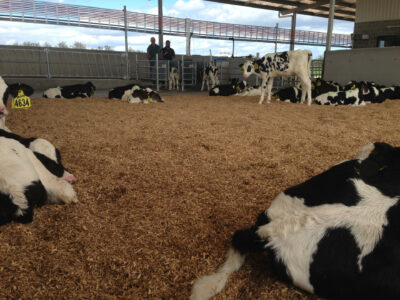
Emma regrets just one thing: "In one building, we installed two HygieneStations for each box with 25 calves. But in the other barn we only have one HygieneStation for each box. And that causes a lot of competition and stress in the group." There is certainly room for improvement in this area.
Thank you, Emma, for showing us around your impressive calf rearing facility.
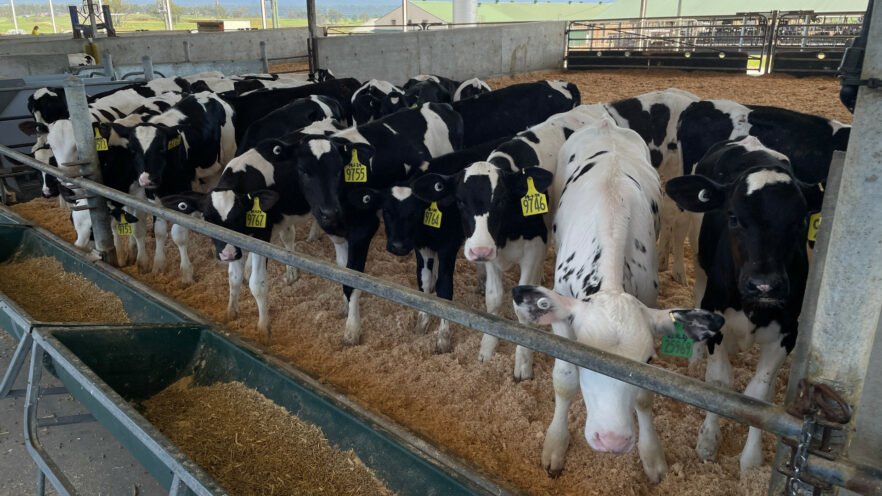

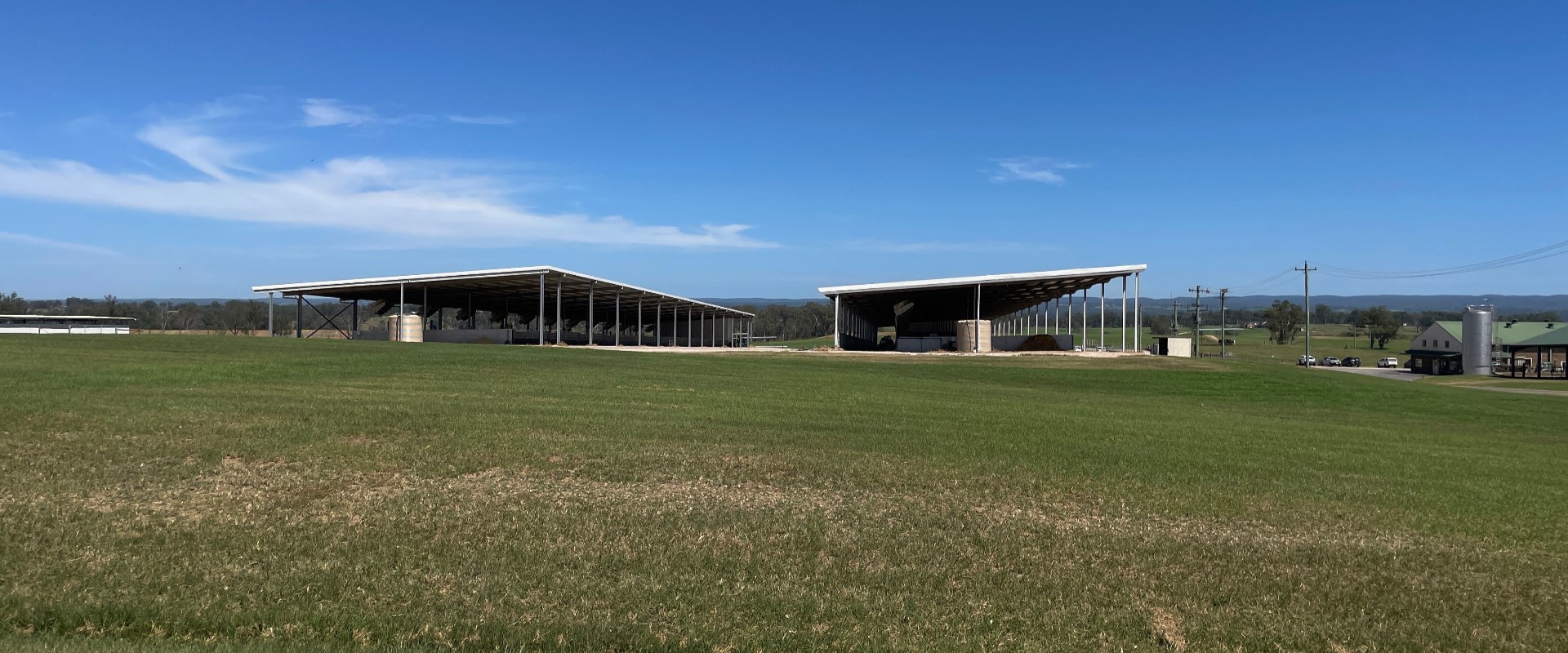
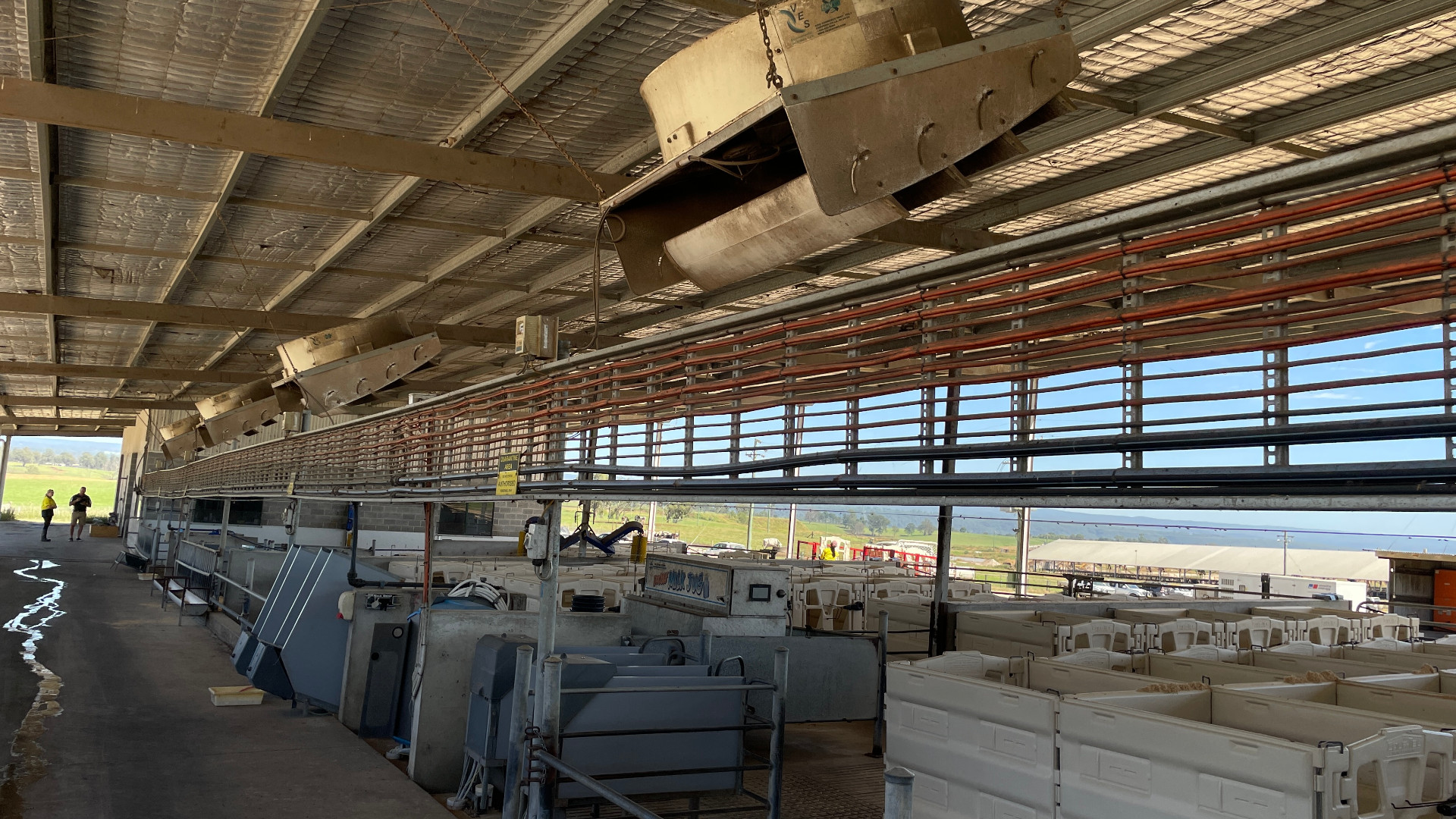
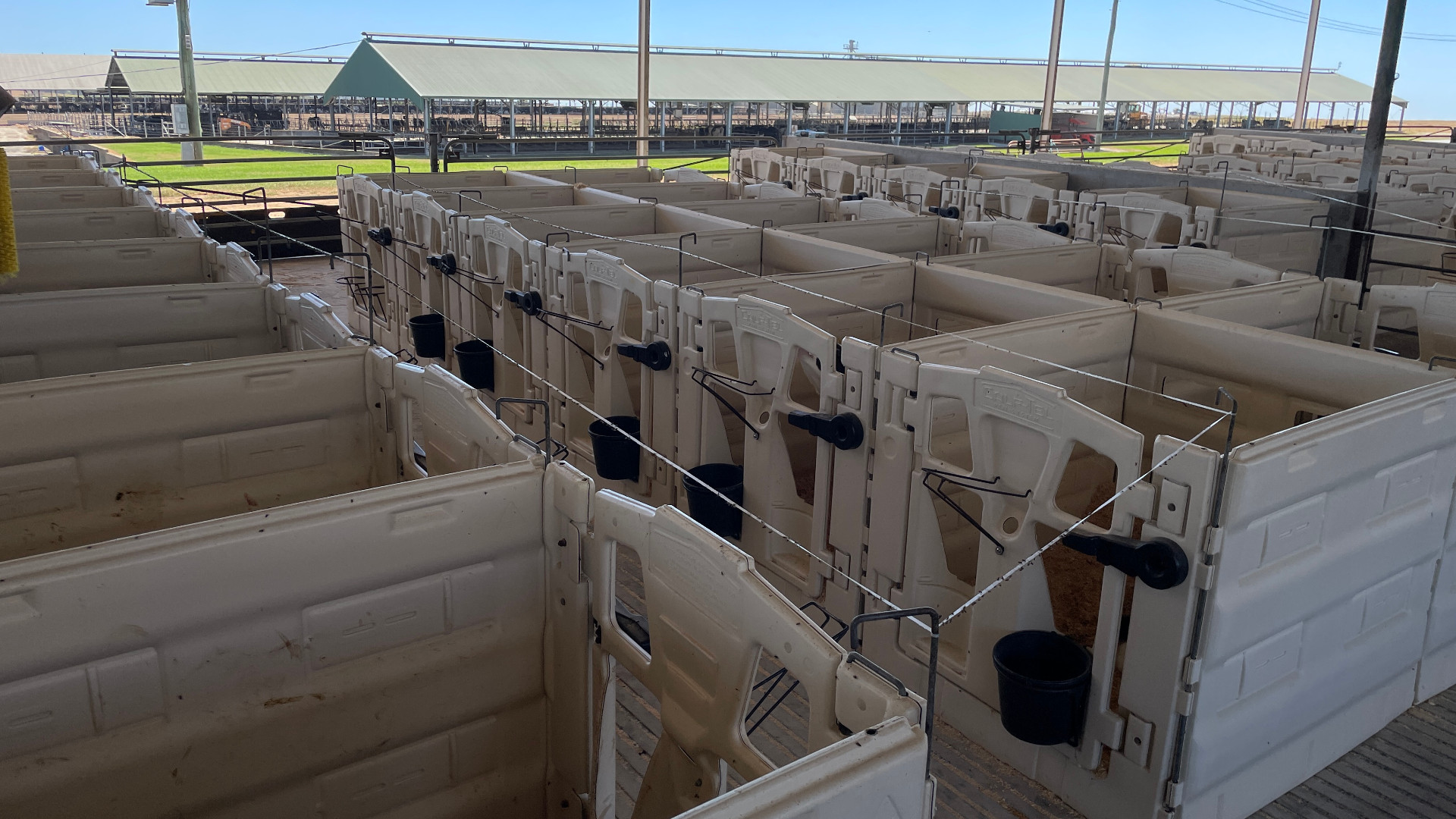
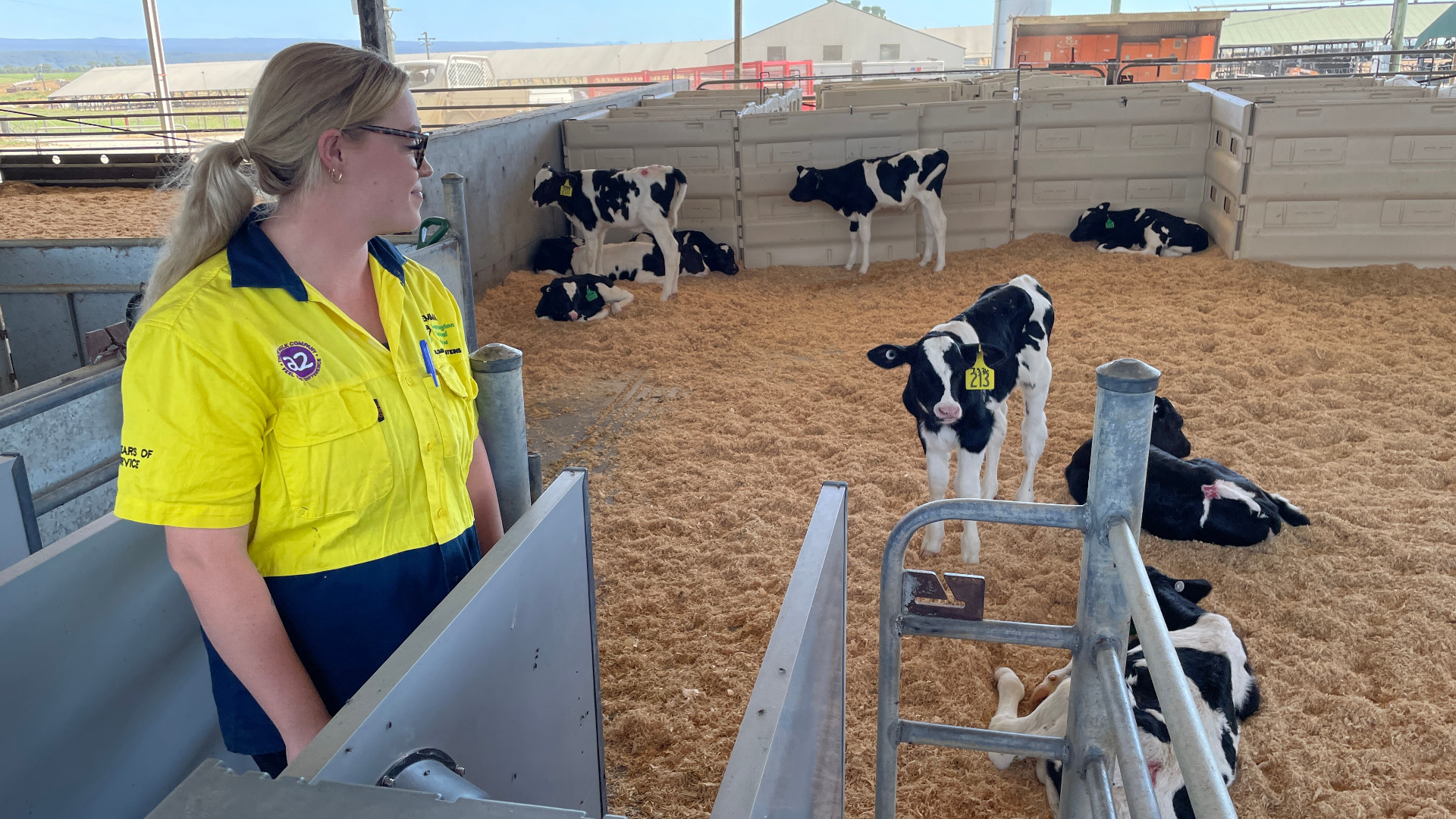
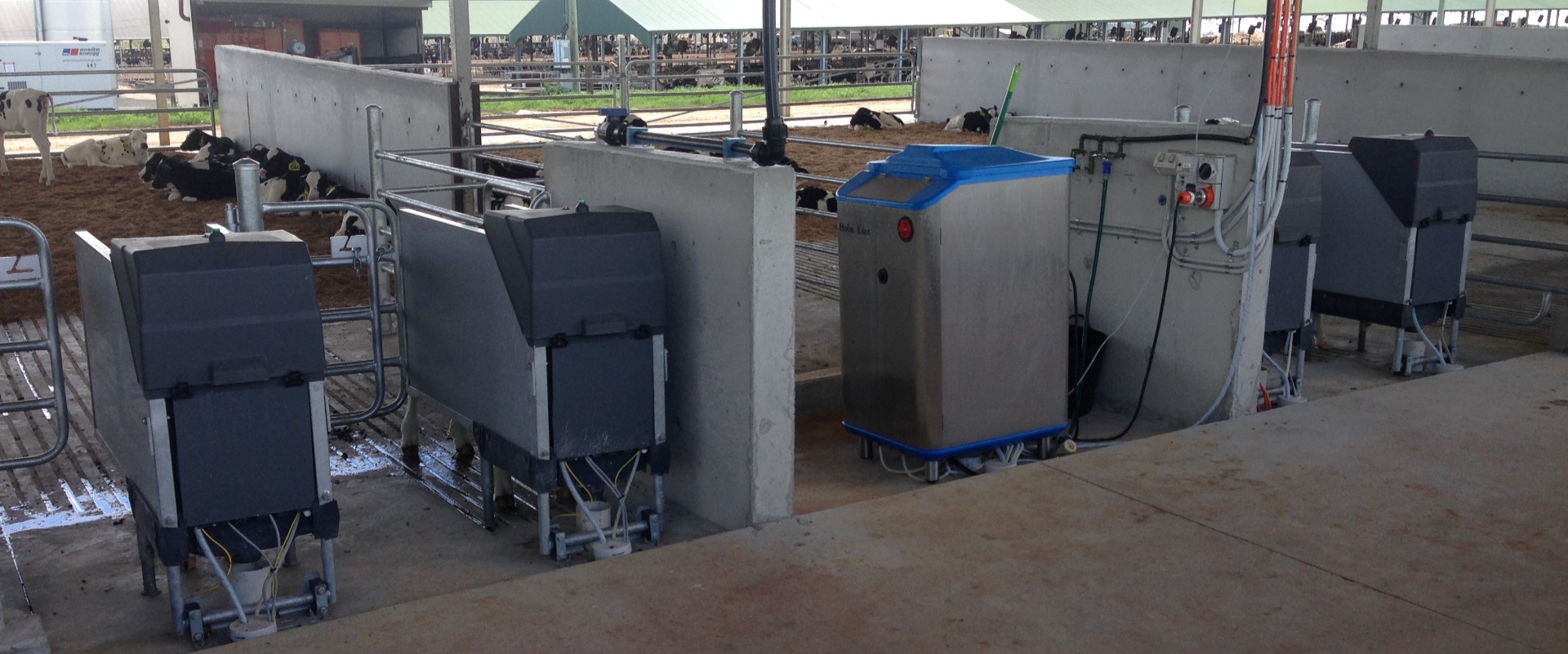
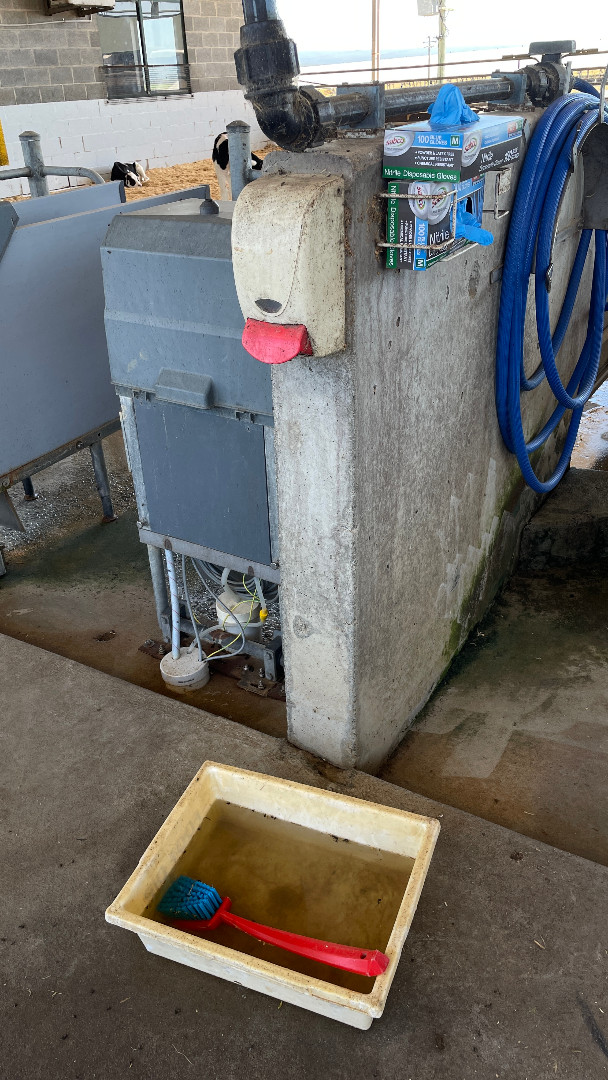 Total hygiene: boot and hand sanitiser and gloves at every calf feeder.
Total hygiene: boot and hand sanitiser and gloves at every calf feeder.
